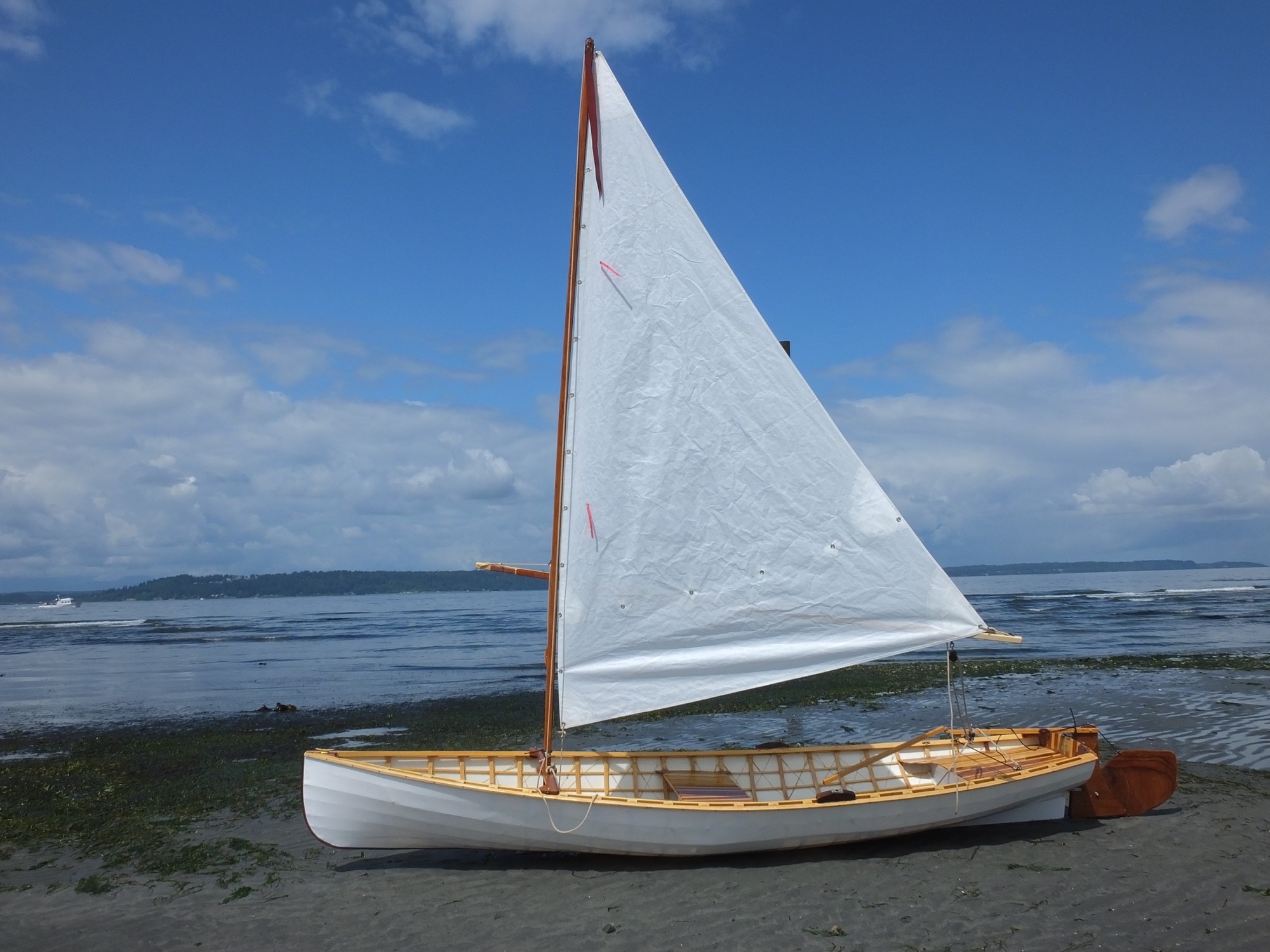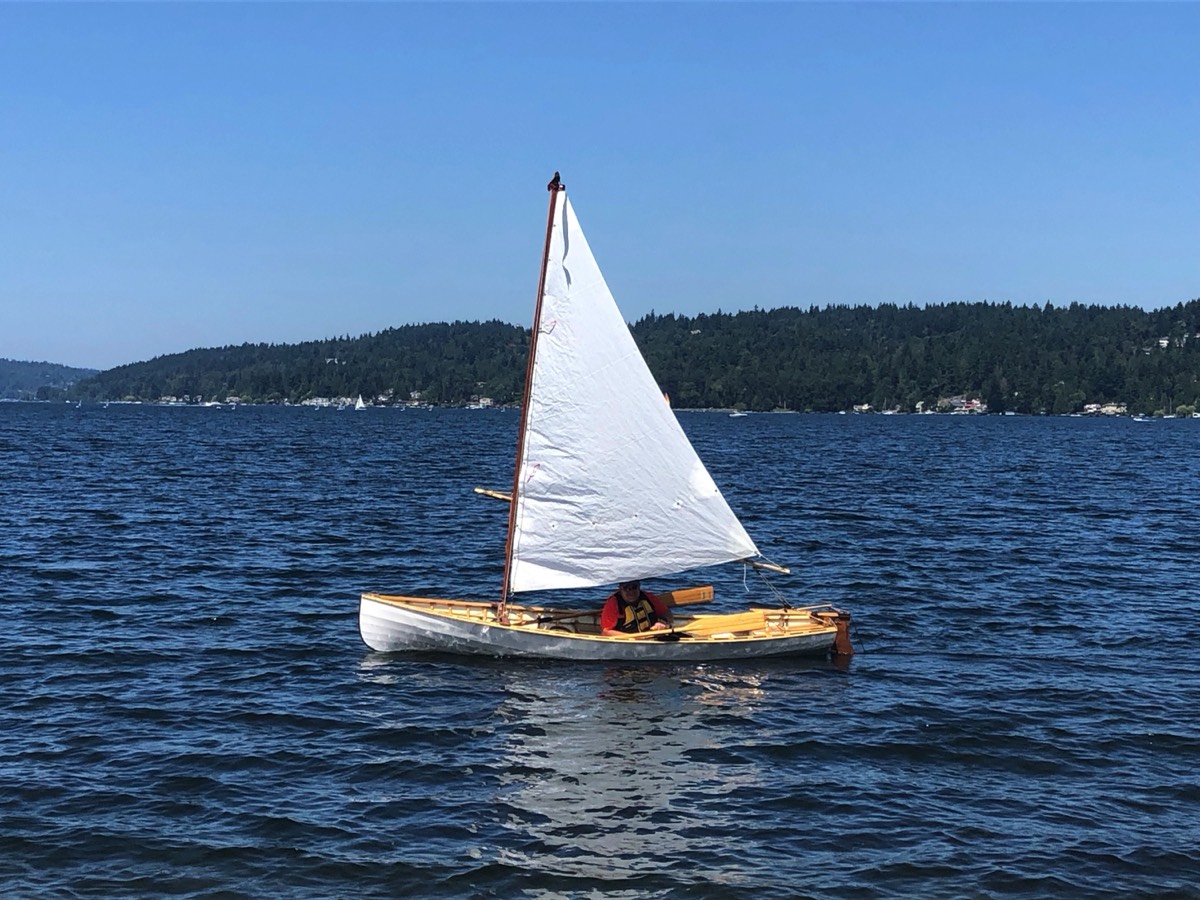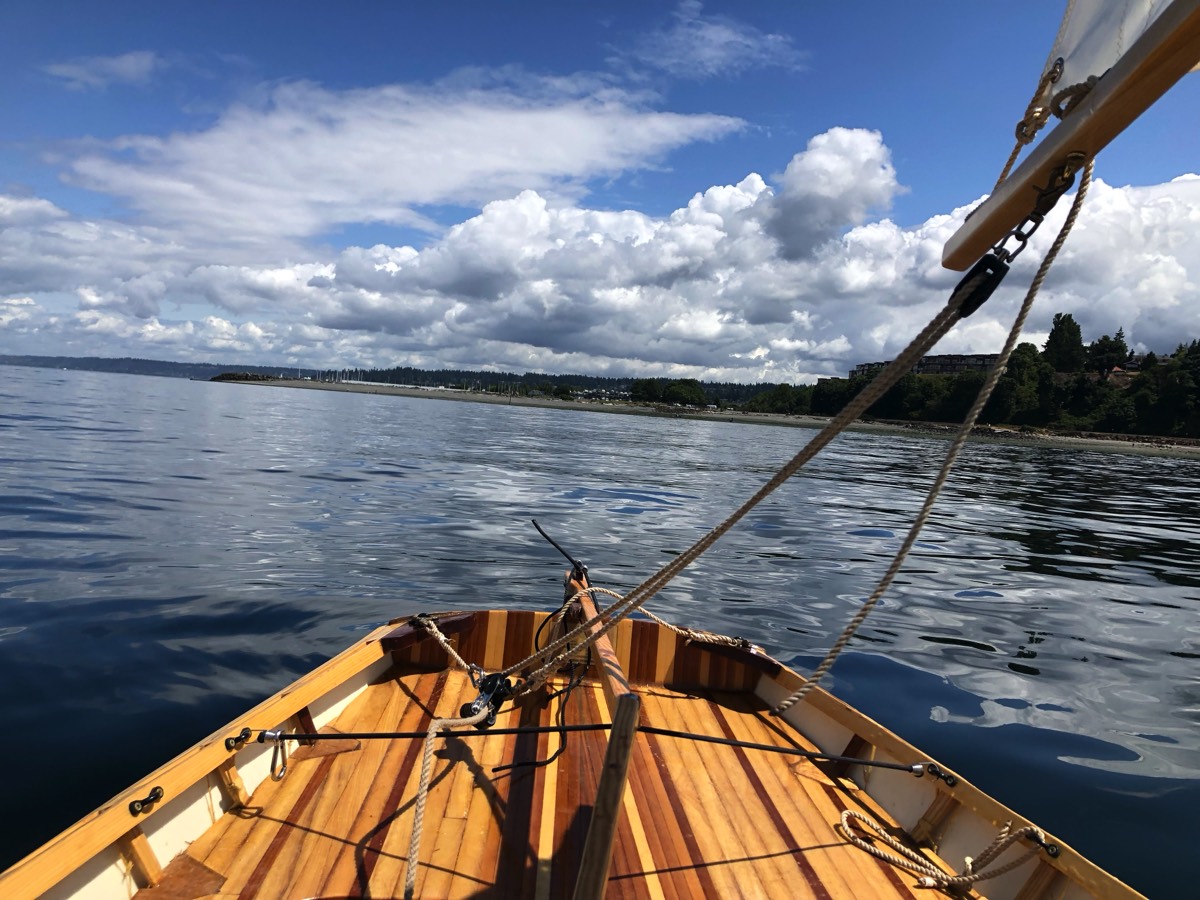This boat will be built with a spruce frame, ash ribs, and western red cedar accents. It will be covered with Ceconite Dacron fabric, making for an ultralight yet tough boat.
Length: 14 feet
Beam: 48.5 inches
Weight: ~60 lbs.
-
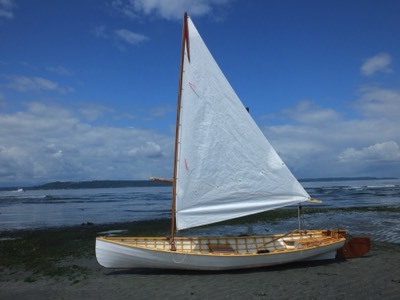
Classic 14 Sailboat.
-
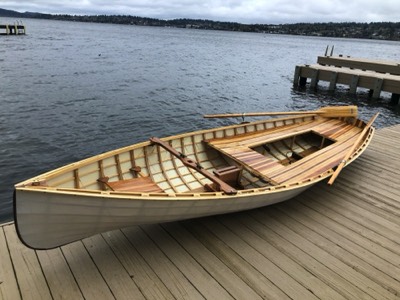
The boat is done!
-
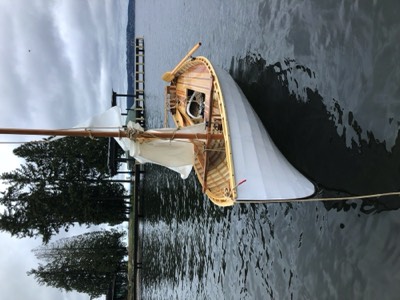
Classic 14 Sailboat.
-
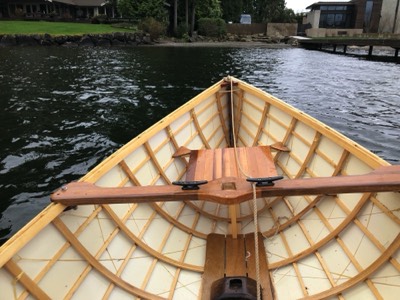
Classic 14 Sailboat.
-
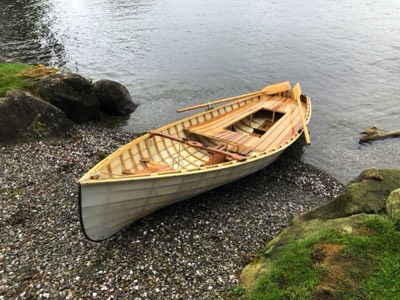
Classic 14 Sailboat.
-
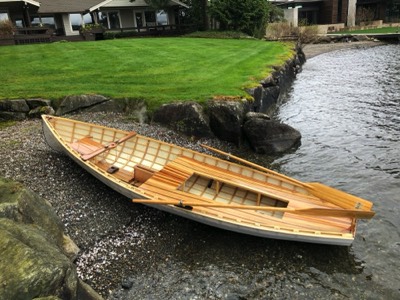
Classic 14 Sailboat.
-
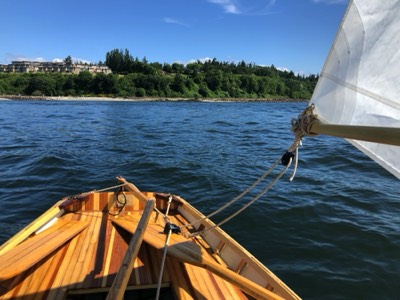
Classic 14 Sailboat.
-
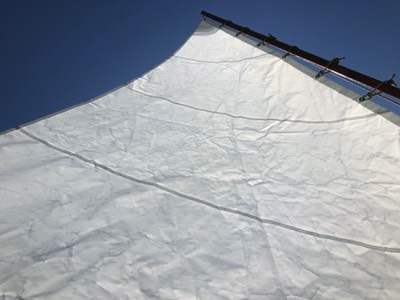
Classic 14 Sailboat.
-
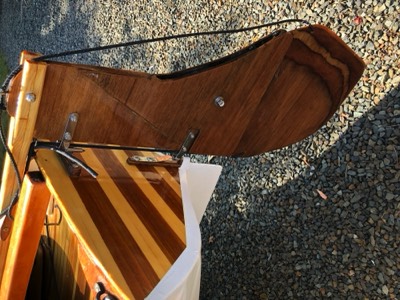
Kick up rudder.
-
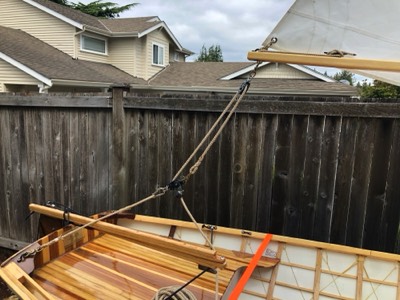
Classic 14 Sailboat.
-
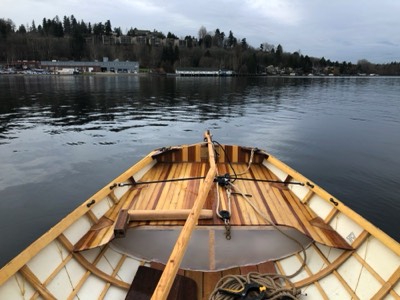
Classic 14 Sailboat.
-
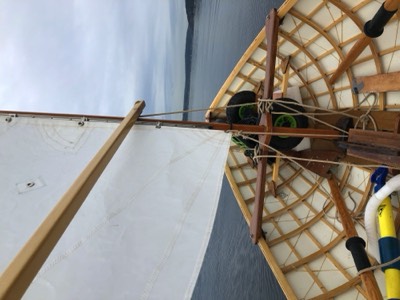
Classic 14 Sailboat.
-
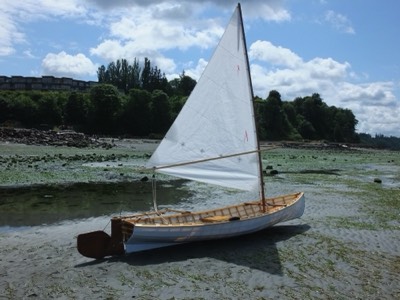
Classic 14 Sailboat.
-
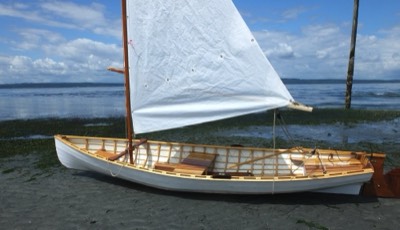
Classic 14 Sailboat.
-
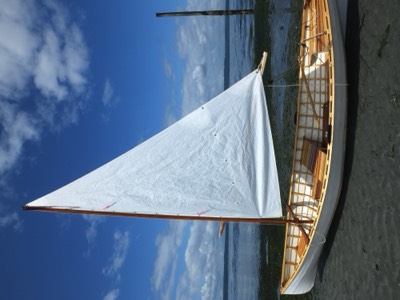
Classic 14 Sailboat.
-
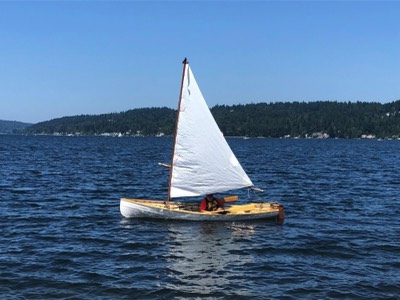
Classic 14 Sailboat.
-
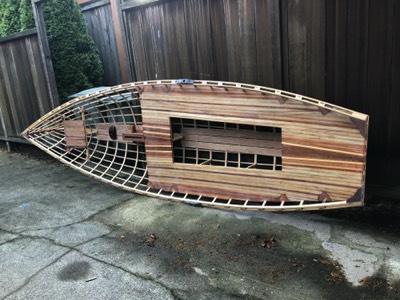
Construction Gallery
-
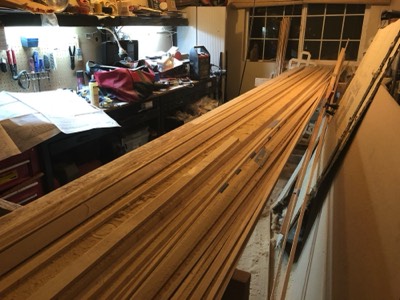
11/5/17 - The build starts by ripping the wood into stringers, ribs, and the keelson.
-
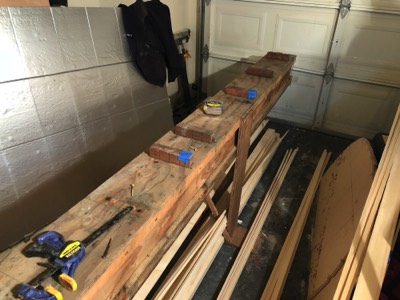
11/8/17 - A strongback is set up.
-
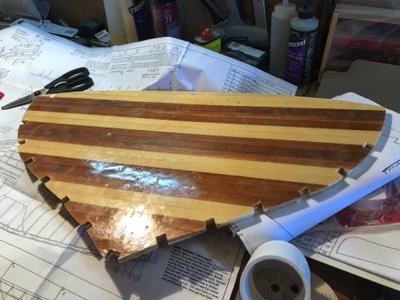
Two parts of the transom are created and fiberglassed.
-
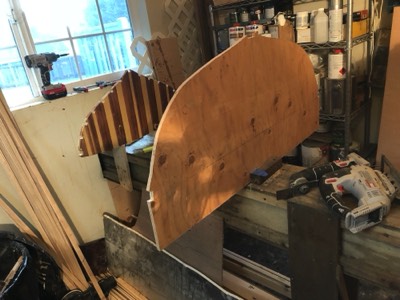
Temporary forms are set up.
-
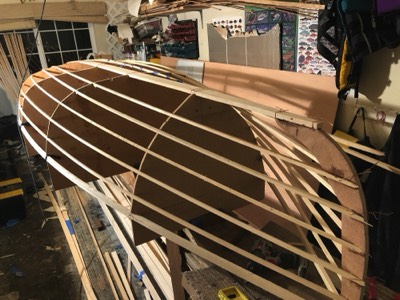
11/11/17 - The keelson and 10 stringers are placed on the temporary frames.
-
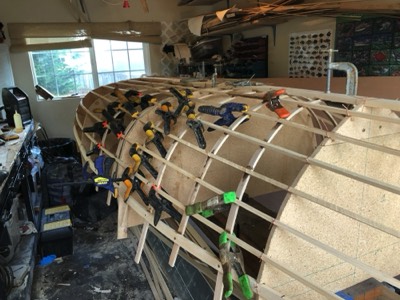
11/13/17 - The first few ribs are steamed and epoxied in place.
-
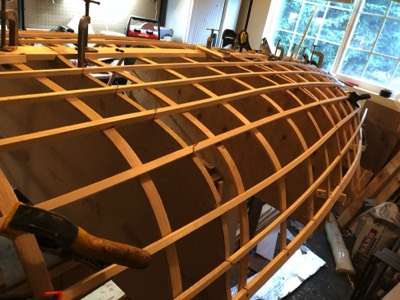
All of the ribs have been steamed, bent, and pushed into place.
-
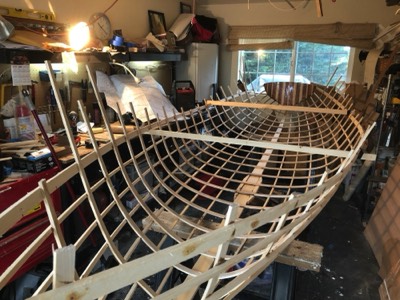
11/17/17 - The boat is removed from the temporary frames.
-
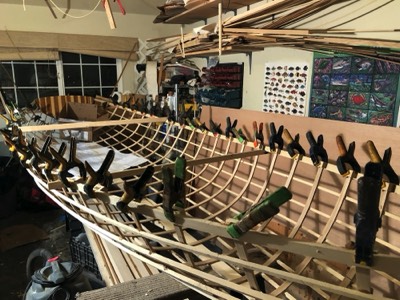
11/19/17 - The overhanging ribs are cut off and inwale spacer blocks are epoxied to the gunwale.
-
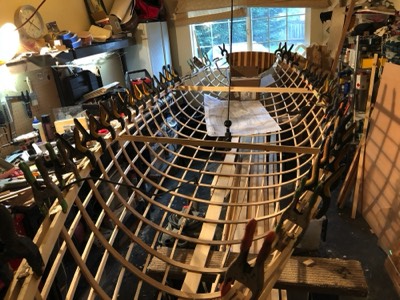
11/20/17 - The inwales are epoxied in place.
-
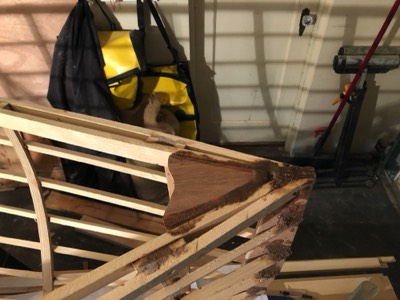
11/21/17 - The meranti breasthook is installed.
-
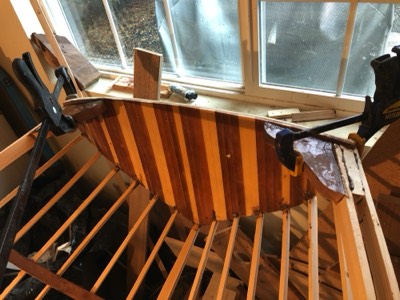
The meranti transom knees are installed.
-
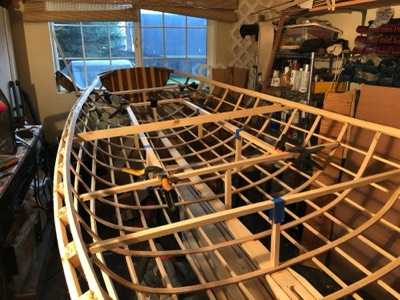
11/22/17 - Seat support pieces are test fit.
-
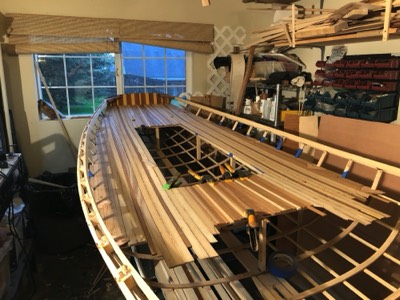
11/28/17 - The modified aft seating area is created out of paulownia and cedar strips.
-
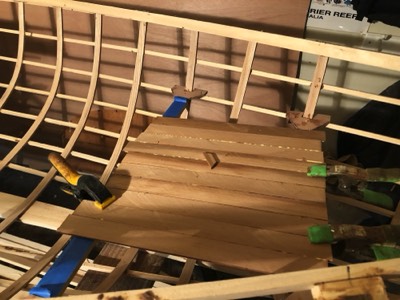
The forward seat is made from cedar strips.
-
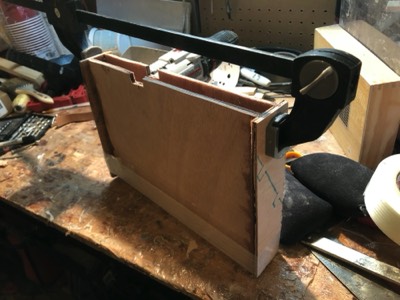
11/30/17 - The daggerboard trunk is epoxied together.
-
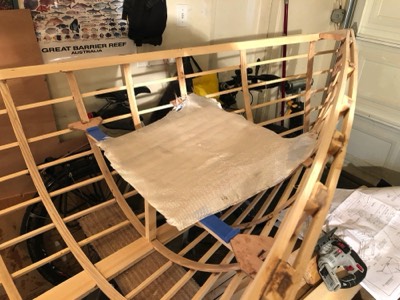
Forward seat is ready to be fiberglassed.
-
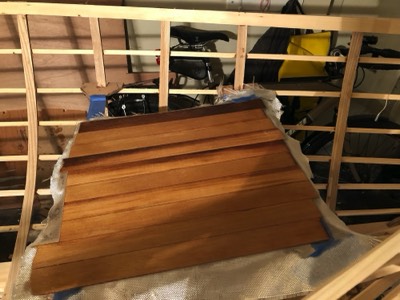
Forward seat.
-
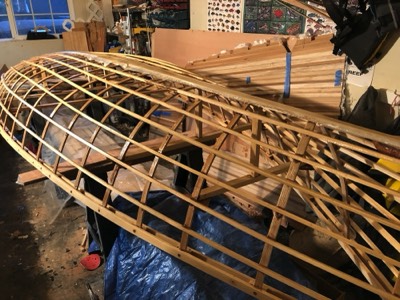
12/8/17 - The underside of the wood frame is sealed with epoxy and the keelson is fiberglassed.
-
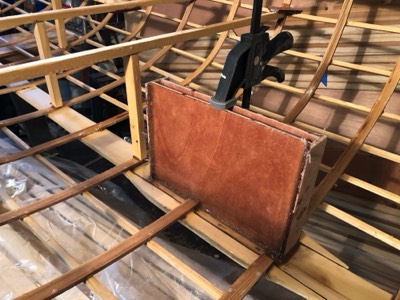
12/12/17 - The daggerboard trunk is epoxied in place.
-
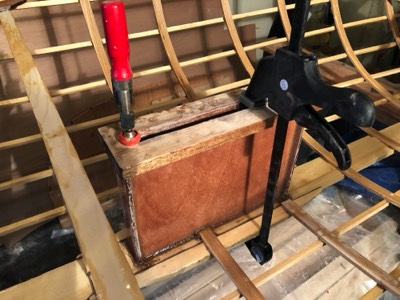
1/2/18 - The top piece of the daggerboard trunk is epoxied in place.
-
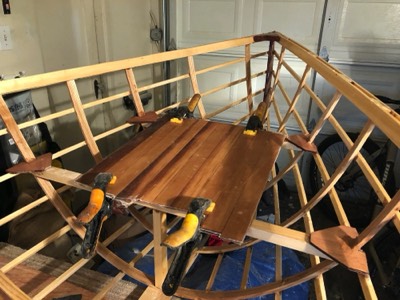
The forward seat is epoxied in place.
-
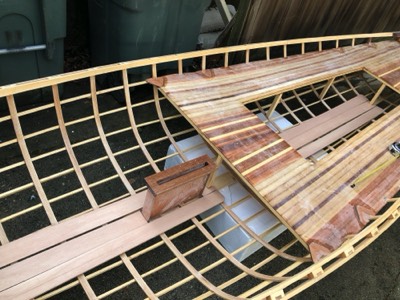
1/8/18 - The floorboards are cut and fitted.
-
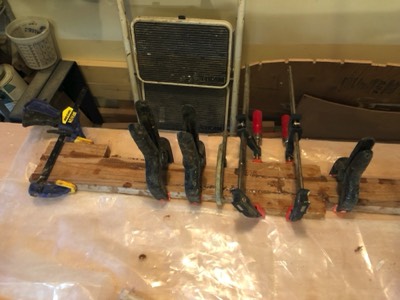
1/9/18 - The mast partner is laminated from several pieces of hardwood.
-
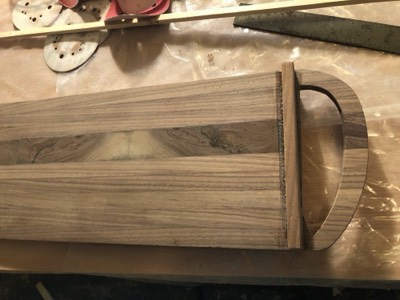
1/10/18 - The daggerboard is sanded and the handle shape is cut out.
-
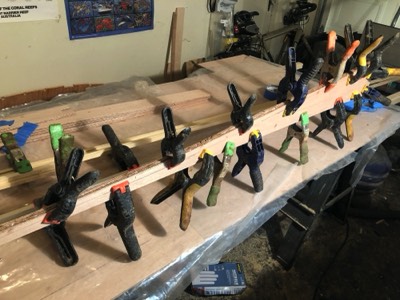
1/11/18 - The skeg is laminted from two pieces of marine plywood.
-
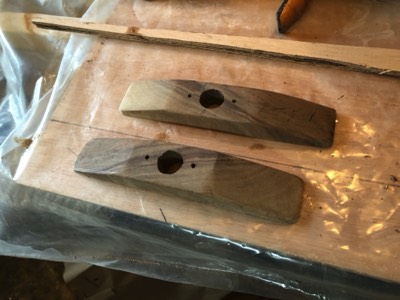
1/12/18 - Oarlock brackets are shaped from pieces of walnut.
-
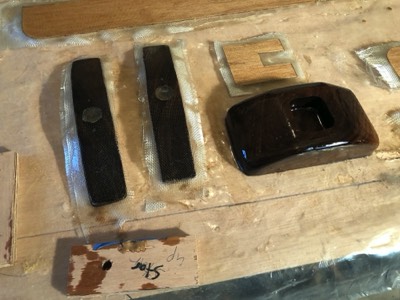
Mast step and oarlock brackets sealed are sealed with epoxy.
-
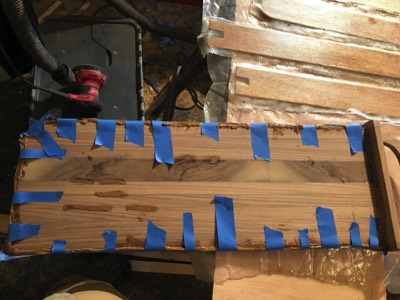
The edge of the daggerboard is coated with a layer of thickened epoxy.
-
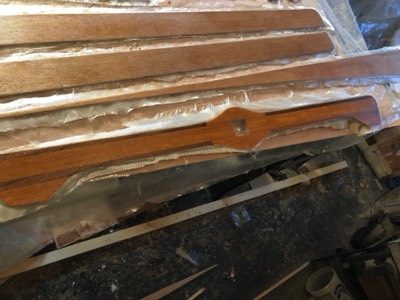
Mast partner is fiberglassed.
-
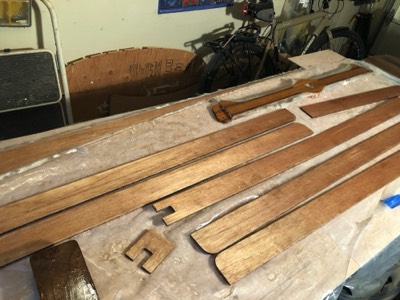
1/14/18 - The undersides of the floorboards and mast partner are sealed with epoxy.
-
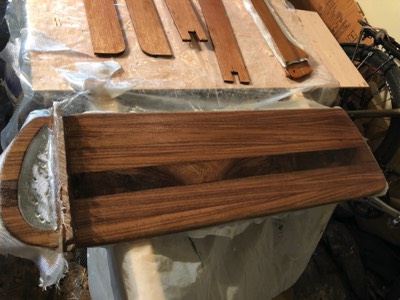
The daggerboard is fiberglassed on one side.
-
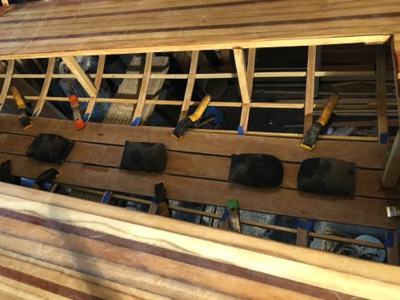
1/16/18 - The aft floorboards are epoxied in place.
-
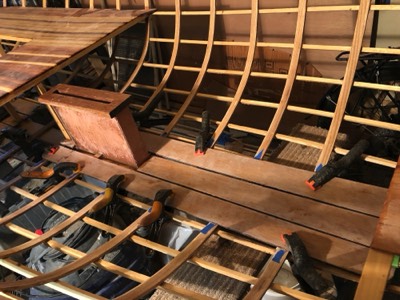
The forward floorboards are epoxied in place.
-
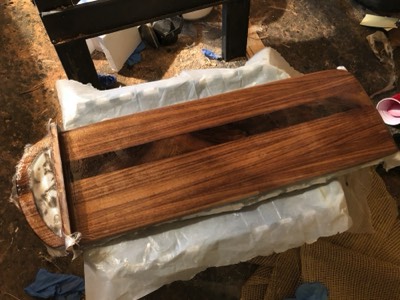
The flipside of the daggerboard is fiberglassed.
-
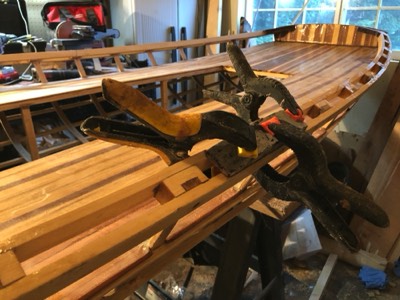
Oarlocks are epoxed in place.
-
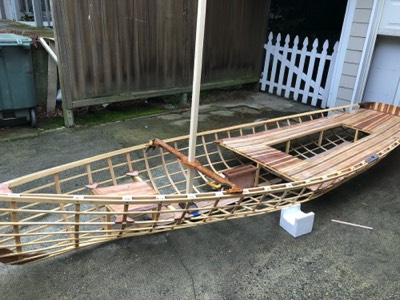
1/17/18 - The mast is test fit.
-
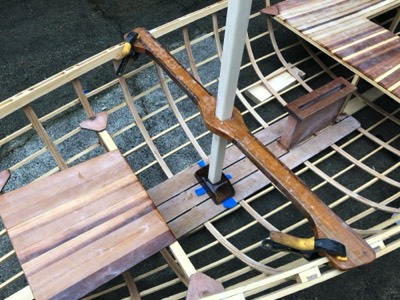
The mast step place is determined.
-
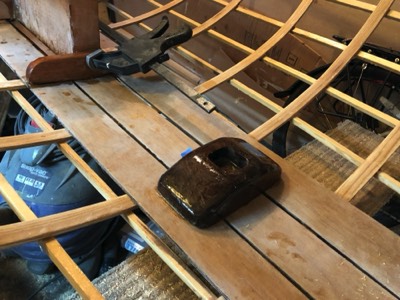
Mast step is epoxied in place.
-
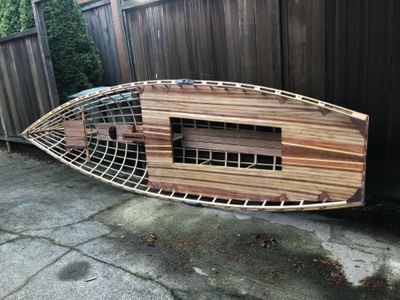
1/19/18 - The boat is almost finished!
-
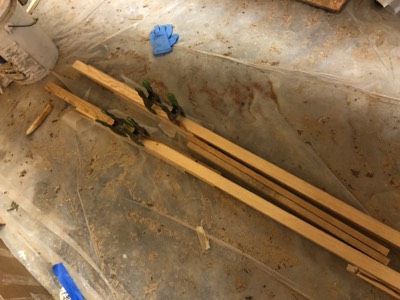
2/16/18 - Pieces of spruce are scarfed together to form oar blanks.
-
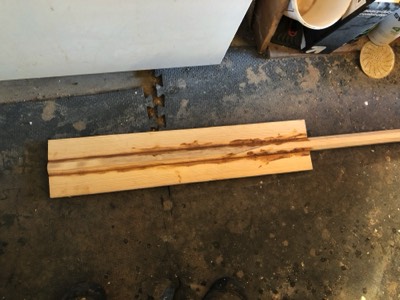
2/24/18 - pieces of spruce are epoxied to either side of the shaped oar shaft.
-
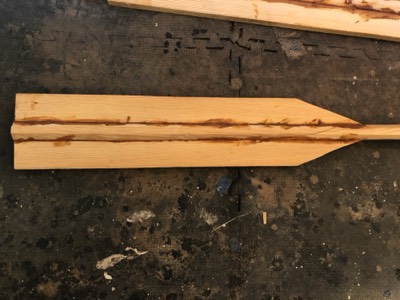
Angles are cut in the blades.
-
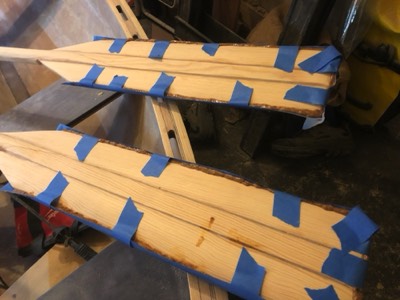
Thickened epoxy is applied around the tips of the oars to increase durability.
-
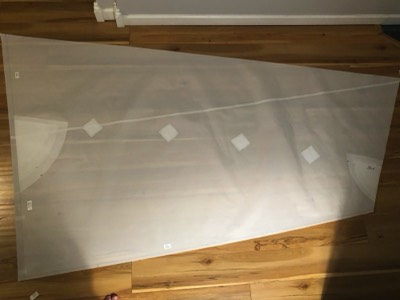
The reef patches are sewed to two panels.
-
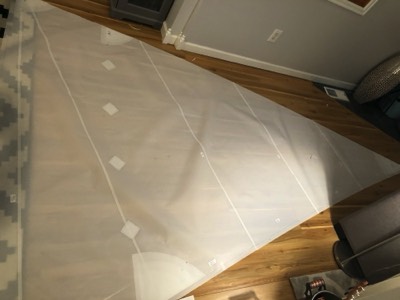
3/5/18 - All the panels are sewn together.
-
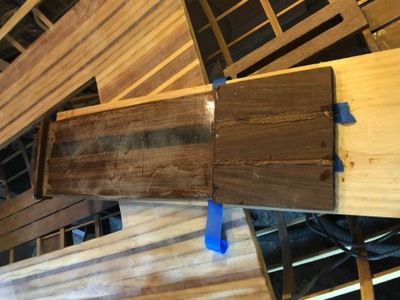
3/13/18 - pieces of ironwood are epoxied to the bottom of the daggerboard.
-
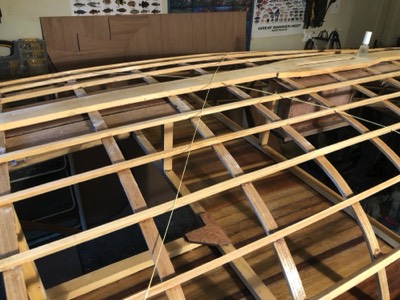
The first two kevlar fibers are strung and tightened on the hull.
-
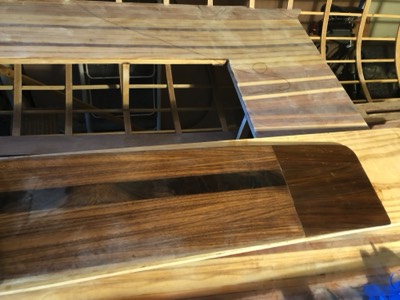
The ironwood is sanded smooth to match.
-
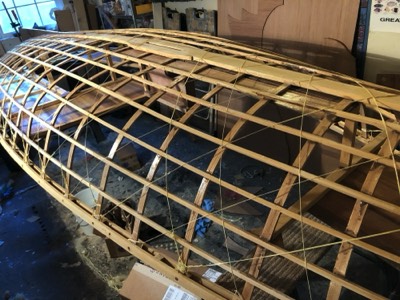
3/16/18 - The entire hull is laced with kevlar strands.
-
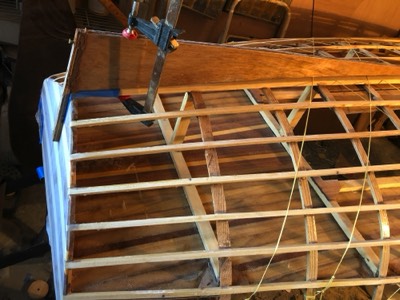
The skeg is test fit.
-
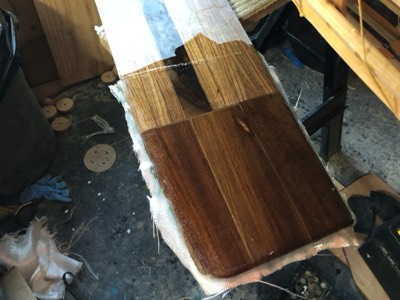
3/18/18 - The ironwood pieces of the daggerboard are reinforced with fiberglass.
-
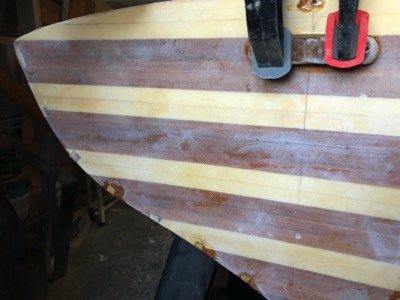
A gudgen spacer block is epoxied to the transom.
-
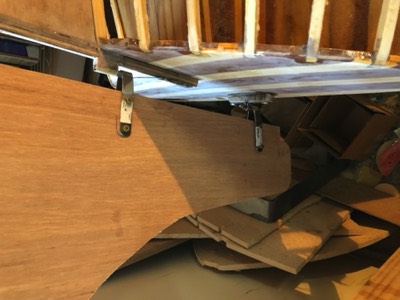
3/19/18 - The rudder is test fit upside down!
-
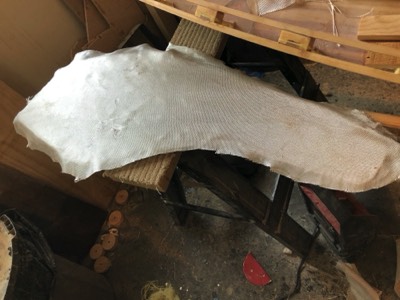
The first side of the rudder is fiberglassed.
-
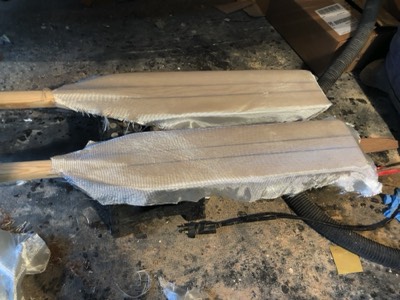
The first sides of the oar blades are ready for epoxy.
-
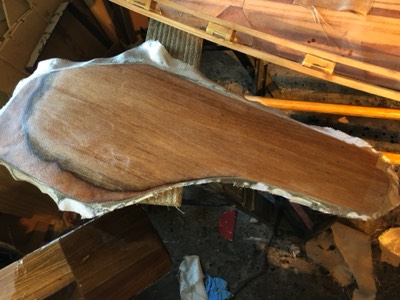
The rudder is saturated with epoxy.
-
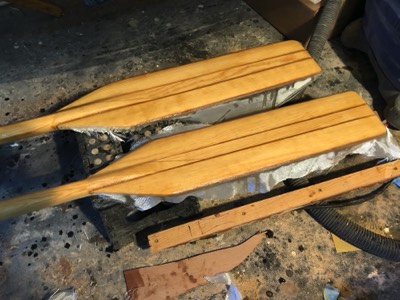
The oar blades are saturated with epoxy.
-
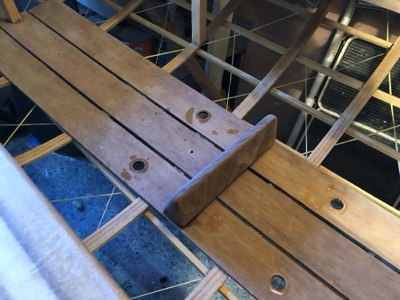
3/20/18 - Holes for the footbrace are drilled.
-
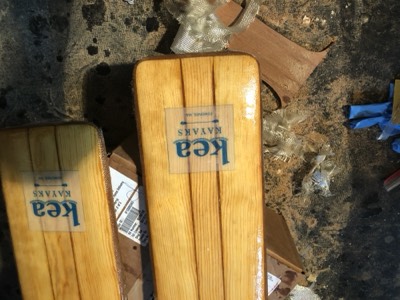
A fill coat of epoxy is added.
-
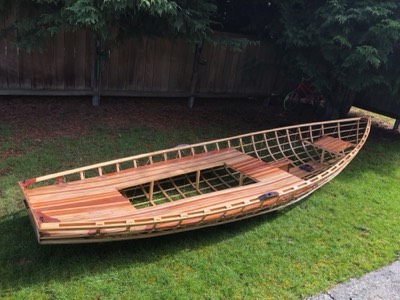
3/23/18 - Construction is complete! The boat will get the dacron skin next.
-
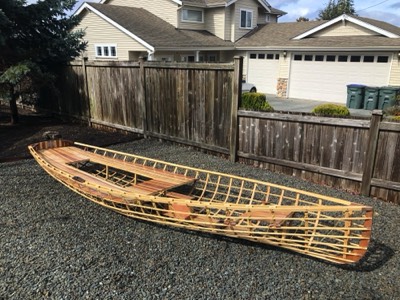
Classic 14
-
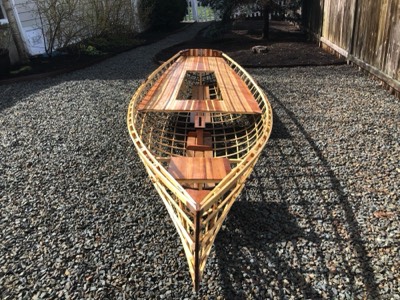
Classic 14
-
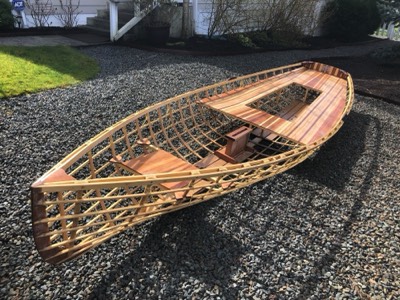
Classic 14
-
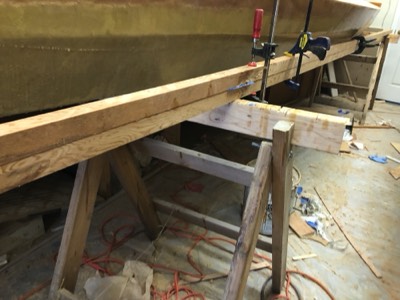
3/26/18 - A new mast is scarfed together from two pieces of Douglas Fir.
-
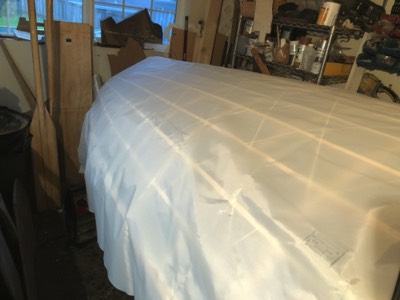
The Ceconite dacron is draped over the hull.
-
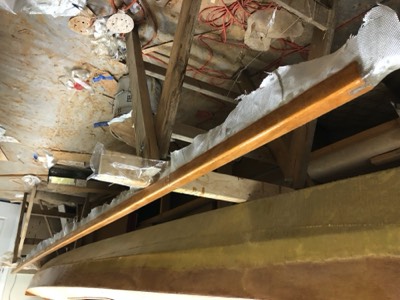
3/27/18 - The mast is fiberglassed on three sides.
-
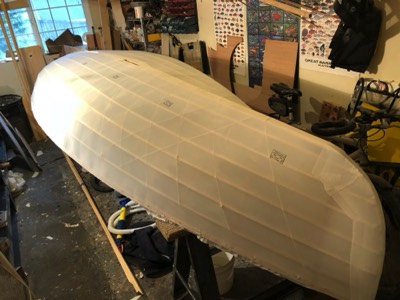
The Ceconite has been heat shrunk and secured to the gunwales.
-
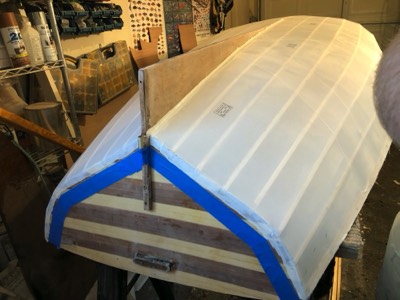
The skeg is screwed into place and glued with 5200.
-
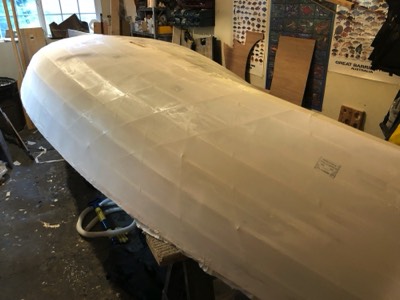
The first coat of paint is applied to the dacron to waterproof it.
-
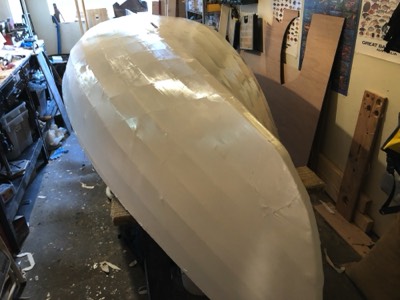
3/29/18 - The second coat of paint is applied.
-
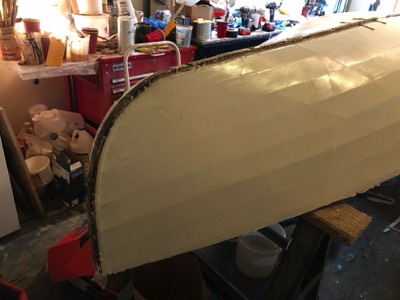
A rubstrip is laminated from several pieces of walnut.
-
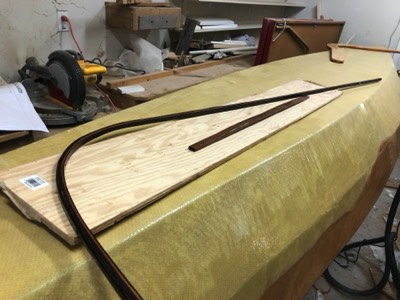
3/30/18 - The rubstrips are saturated with epoxy.
-
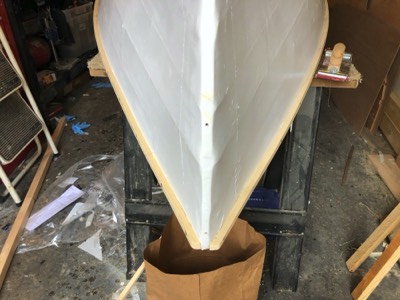
The rubrails are test fit.
-
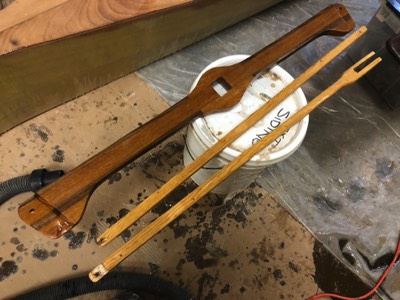
3/31/18 - The mast partner and tiller are varnished.
-
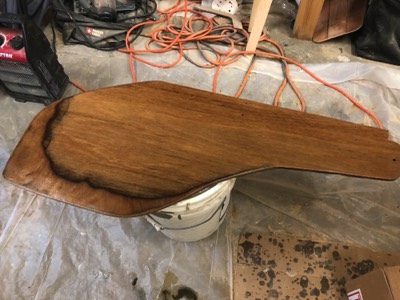
The rudder is varnished.
-
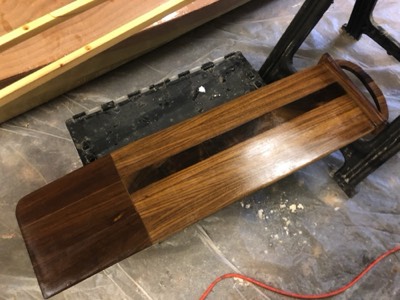
The daggerboard is varnished.
-
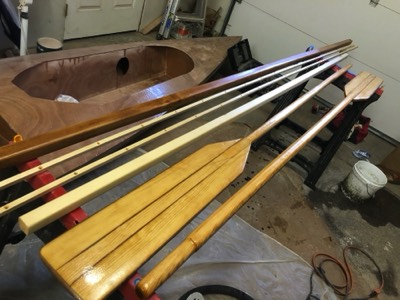
The oars, spars, and rubrails are varnished.
-
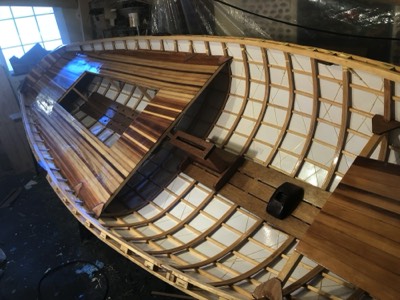
First coat of varnish is applied.
-
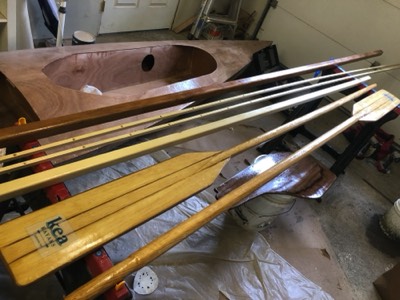
The opposite sides of the oars and spars are varnished.
-
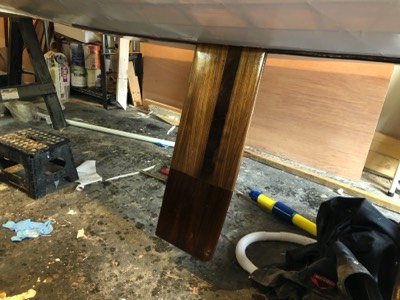
4/4/18 - The daggerboard is test fit.
-
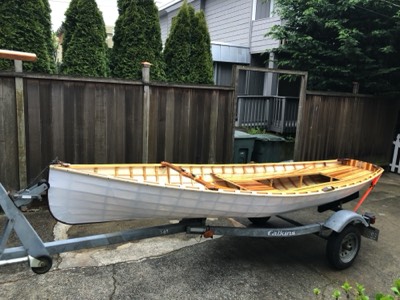
4/8/8 - She fits on the new trailer nicely!
-
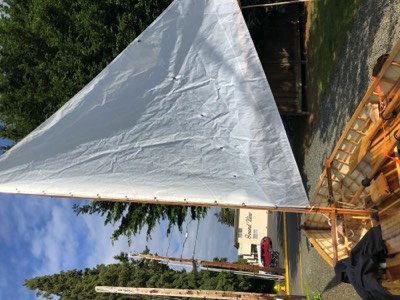
5/25/18 - New sail track is tested out.
-
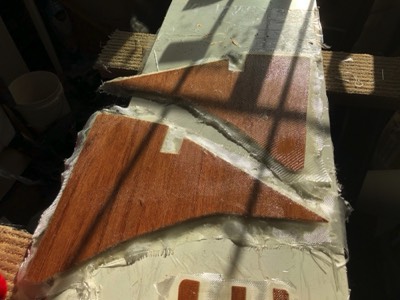
5/27/18 - Pieces of the new kick-up rudder are fiberglassed.
-
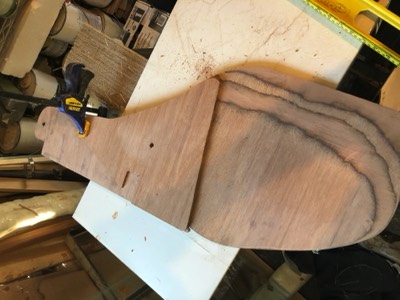
5/28/18 - The kick up rudder is test-assembled.
-
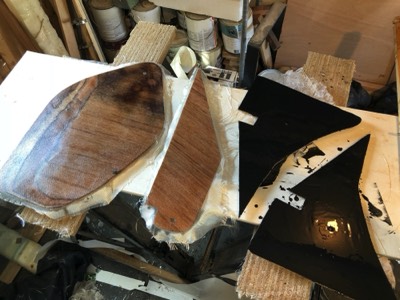
More parts are fiberglassed.
-
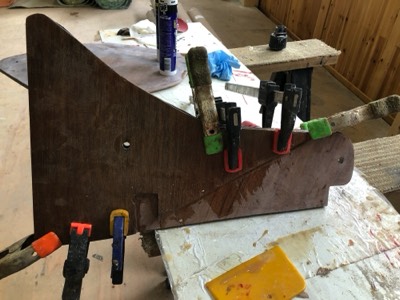
7/1/18 - The parts of the kick up rudder trunk are epoxied together.
-
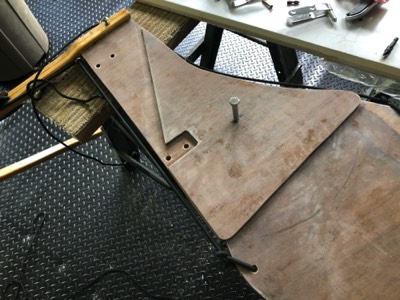
7/2/18 - The kick up rudder is assembled for the first time.
-
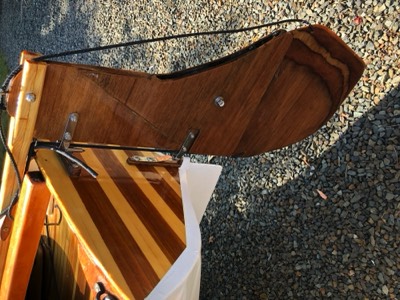
The rudder is mounted on the boat for the first time.
-
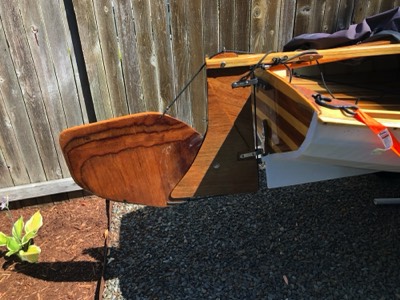
The kick up feature works great.
-
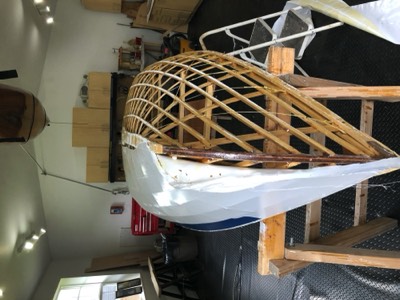
7/19/8 - The old fabric covering is stripped off.
-
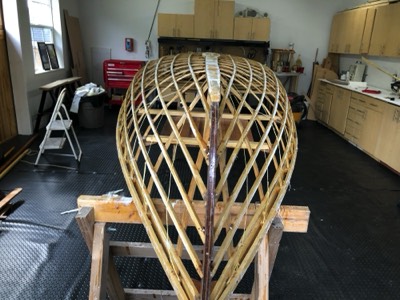
Bare bones again.
-
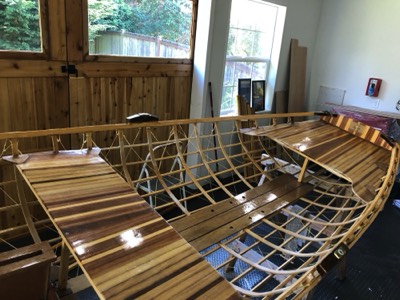
8/3/18 - The side seats have been cut out.
-
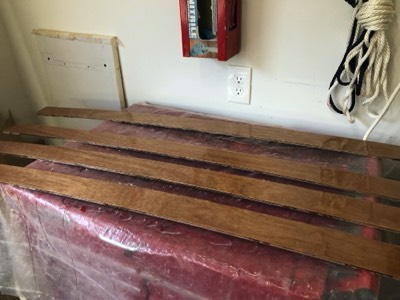
8/6/18 - Extra floor boards are fiberglassed.
-
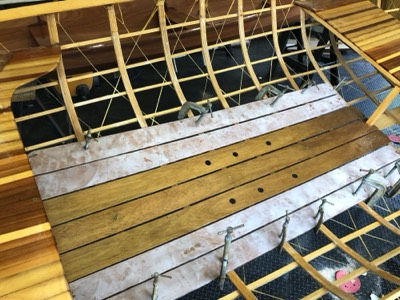
8/8/18 - One more set of floorboards.
-
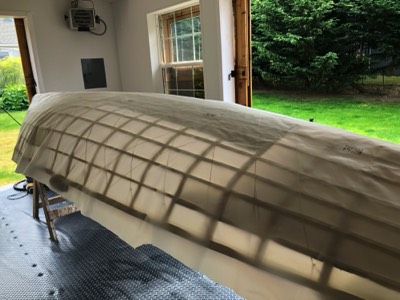
8/13/18 - New Ceconite Dacron is laid on the hull.
-
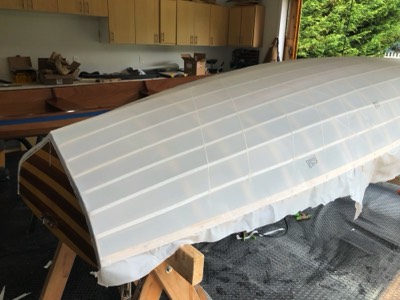
The fabric is heat shrunk onto the hull.
-
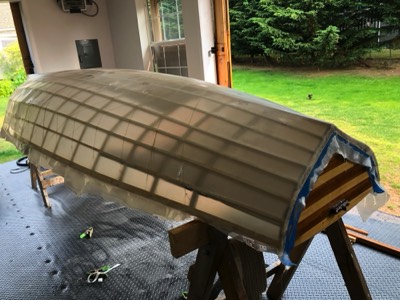
The fiberglass is saturated with epoxy.
-
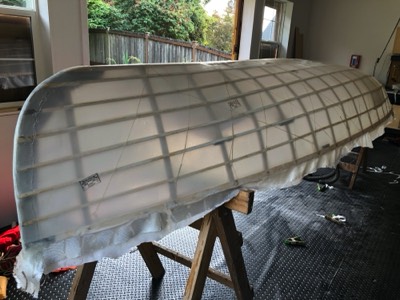
View of the bow.
-
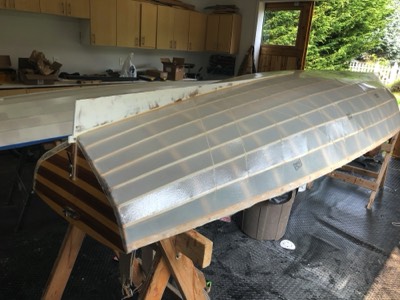
8/15/18 - The skeg is epoxied in place.
-
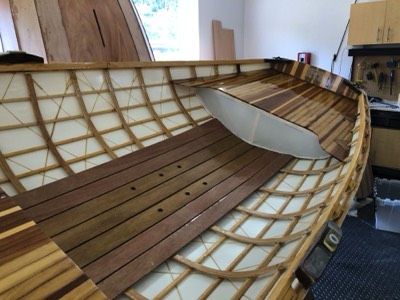
8/28/18 - A piece of Ceconite is used to cover floatation foam mounted under the stern seat.
Link to full construction gallery.
